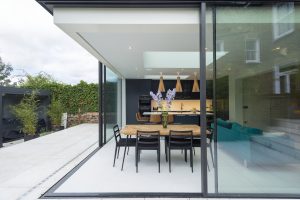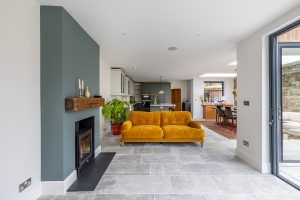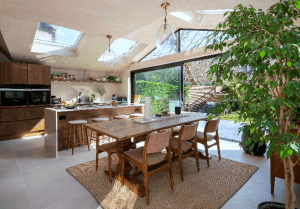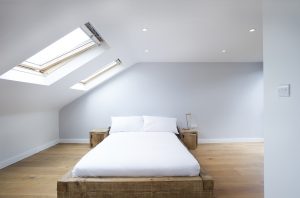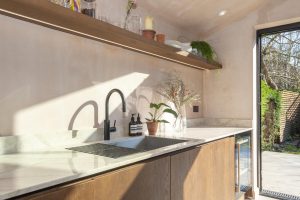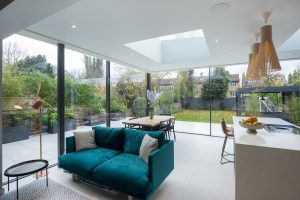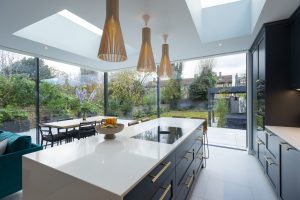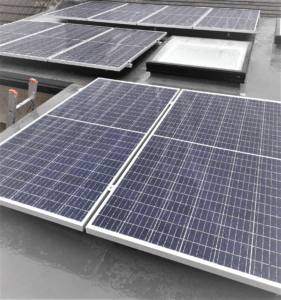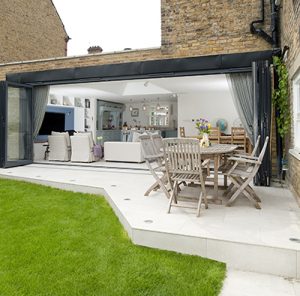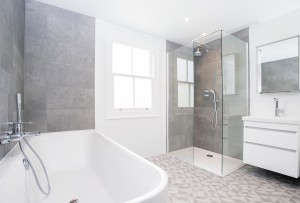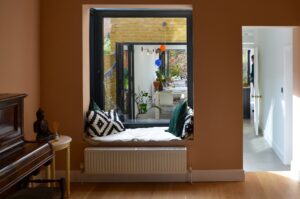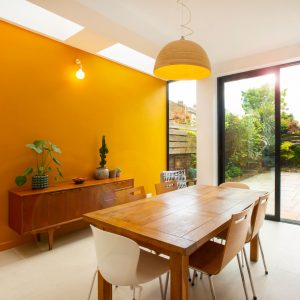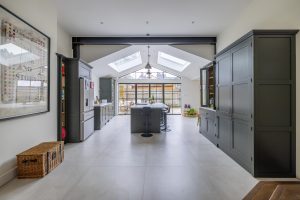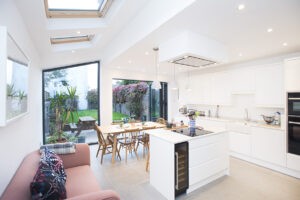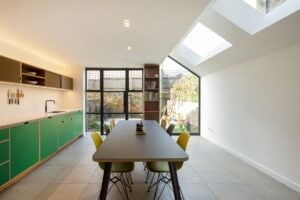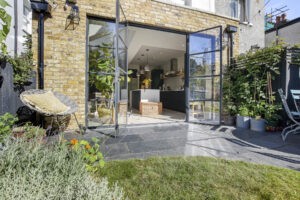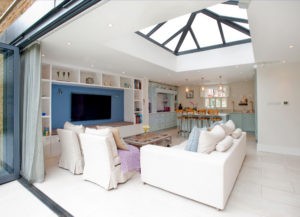When you are planning a house extension, there are many elements to consider. Although much emphasis is usually placed on the floor plan, the roof design is actually one of the most important considerations. The roof design you choose can completely alter the feel and character of your extension.
The main choice to make is between a pitched roof and a flat roof. This can be a tricky decision as both bring advantages and disadvantages. Here we look at both styles in depth and examine aspects such as budget, space, functionality and aesthetics. We discuss flat roof vs pitched roof for your extension to help you make the best decision.
Flat Roof Extensions – Pros & Cons

Flat roofs appear in many modern roof designs as they are perfect for contemporary minimalistic designs. This type of roof for an extension is cheaper and easier to construct, so labour charges are lower and fewer building materials are needed.
Flat roofs suit modern designs well and can be successfully fitted with solar panels. For those without a garden, flat roofs can be transformed into attractive green roofs. Rooflights or ‘windows in the roof’ can maximise on natural daylight and achieve a feeling of greater internal height in the extension. Large panels of glass in the flat roof are a spectacular way to increase natural light and to enjoy the sky by day and night. Rooflights in a flat roof extension can be used to bring a contemporary feel to the design of the new interior space. Lantern skylight in particular, create a warm ambiance in the space.
There are a number of negative points to consider about flat roofs. Without the clever use of skylights, low ceilings can feel low and make the extension feel a little restrictive. A flat roof extension is likely to be lower in energy efficiency than a pitched roof. Flat roof insulation solutions use advanced insulation- including reflective materials.
The cons of choosing a flat roof
The primary concern when considering a flat roof extension is drainage. Flat roofs usually have only a minimal slope. When it rains, water tends to pool on a flat roof if there is not a good drainage system. Over time, water can damage the flat roof structure. Pools of water can cause mould, leaks and a reduced lifespan for a flat roof. Drainage solutions include effective guttering, down spouts and internal drains as these all prevent the accumulation of water.
Flat roofs are vulnerable from weather and tear caused by weather. During periods of heavy rain and snowfall is when flat roofs are most susceptible to damage. Regular maintenance of your flat roof extension is essential. Check carefully for cracks in the membrane, damaged seams and a deterioration in the roofing materials. Act quickly to resolve any problems as this will extend the life of your extension flat roof.
Pitched Roof Extensions – Pros & Cons
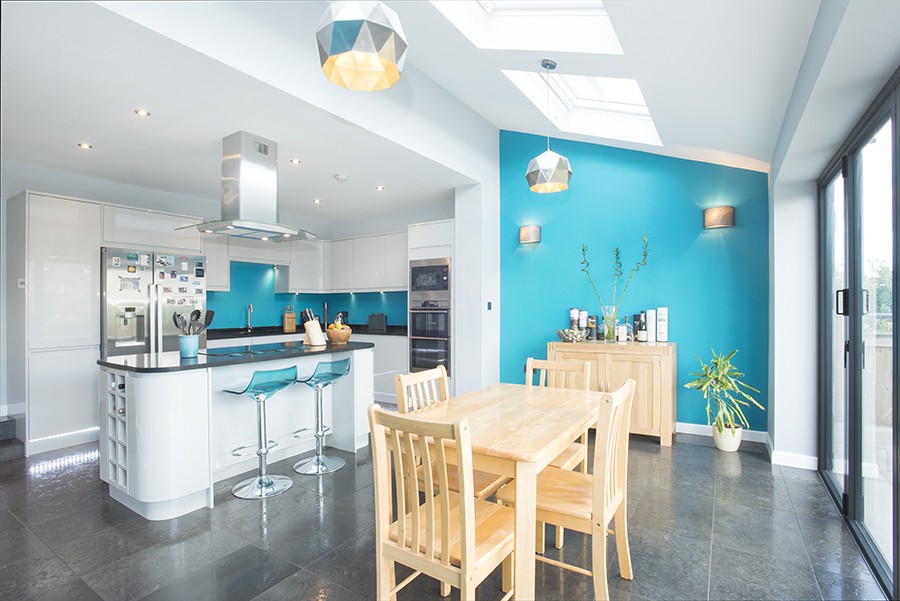
A pitched (angled) roof extension suits many styles of houses. They are popular because they help to preserve the character of the neighbourhood. It is important when planning a pitched roof extension to consider whether neighbours’ views or light will be negatively impacted.
A bonus for choosing a pitched roof is that any skylights will let in a greater amount natural daylight. A pitched roof with plenty of daylight can give the illusion of a larger space. It also makes the use of the extension more versatile.
A pitched roof extension is more durable because its angles ensure that water cannot pool. Inside the extension, a pitched roof allows in more natural light and helps make the space feel much bigger. There is adequate space for good insulation to be installed. A pitched roof is ideal for vaulted ceilings or for extra storage space.
The cons of having a pitched roof
The negative points to bear in mind include the higher installation costs. Pitched roofs are more complex to build and use more building materials. The design of pitched roof can be limited by the style of your main house.
Cost Comparison of Flat Roofs vs Pitched Roofs
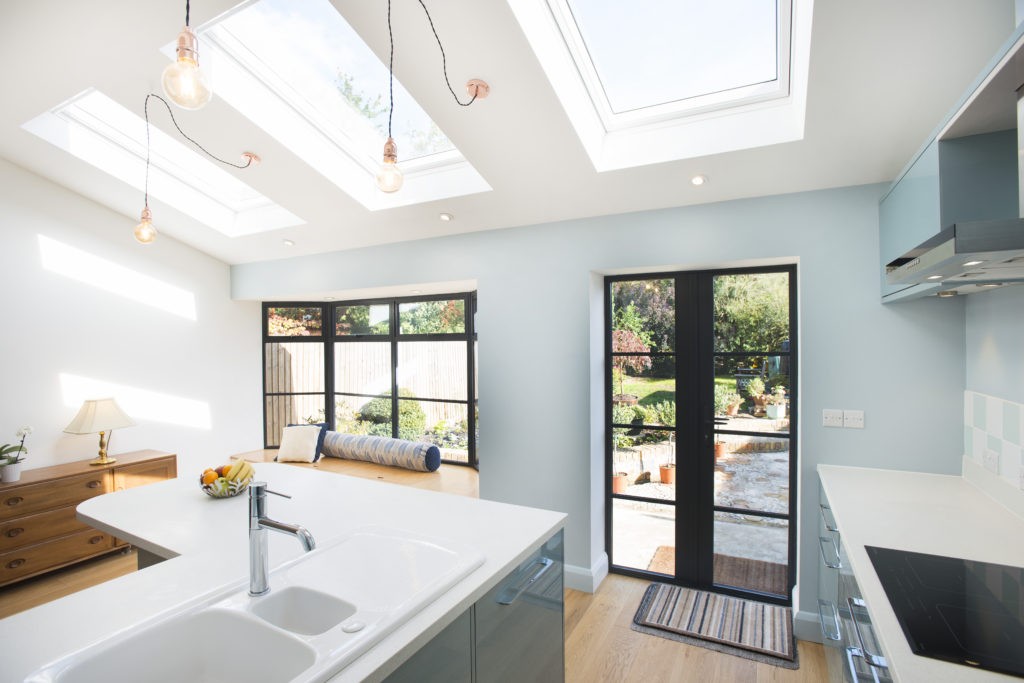
Materials and labour costs
When making a cost comparison, flat roofs are usually cheaper. This is because they are quicker and easier to fit and require fewer materials. The materials usually used in their construction like bitumen, EPDM rubber and PVC are all more cost-effective. In contrast, pitched roofs use such materials as slate, tiles or metal Pitched roofs take longer to construct!
Maintenance and long-term investment
Maintenance requirements for a flat roof extension are higher. Upkeep costs could be higher too if any leaks or other damage occurs. Regular maintenance of flat roof extensions is necessary to prolong the roof’s lifespan. Pitched roof extensions are more expensive initially, but they require far less maintenance. Pitched roofs have greater durability so are a better long-term investment.
Energy Efficiency & Insulation Comparisons
The energy efficiency of both flat roof extensions and pitched roof extensions varies. Energy efficient roofs depend on the design of the roof and types of insulation used.
Pitched roof extensions have better natural ventilation because they have better airflow. This helps to regulate the temperature and thus minimise the need for added heating or cooling. Good roof insulation solutions will help reduce heat loss through the roof space. In hot weather, hot air rises, which helps to keep a pitched roof extension at a comfortable temperature.
Flat roof extensions prove a greater challenge in regulating heating and cooling. This type of extension has less natural airflow. This can cause a build-up of heat during hotter weather and greater heat loss in the winter. Good insulation is essential and flat roof extensions need a greater quantity to ensure that they are good energy-efficient roofs.
With the correct insulation, both home extension roofing options can be energy efficient. Pitched roof extensions however, do naturally regulate temperature more easily.
Planning Permission & Structural Considerations
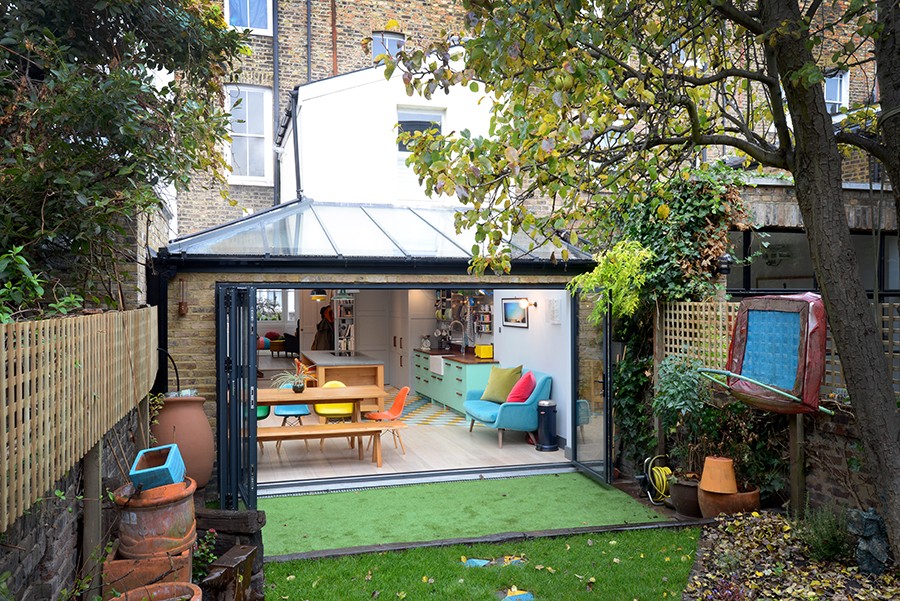
When considering flat roof vs pitched roof for your extension, planning permission is a factor. For both flat roof extensions and pitched roof extensions, check if planning permission is required.
This requirement depends on the location of the property and if there are specific building restrictions. It also depends on the extension size. It is important to check with your local council when you are at the planning stage. Your architect will help you to obtain planning permission and will ensure compliance with local building codes.
Both types of extension roof need reinforcement to ensure their stability and give them durability. Flat roof extensions often need additional support because of the weight of the building materials used. This extra support prevents sagging. Reinforcement is a ‘must’ if the roof must carry the weight of a rooftop garden or terrace.
Pitched roofs are more stable. They may need additional support if the chosen roofing materials are heavy. Additional support proves essential in areas prone to heavy rain and snow. Your architect will advise you on the best way to reinforce your extension roof.
Conclusion
When considering flat roof vs pitched roof for your extension, both have their benefits. Flats roof are sleek and modern in design. Flat roof extensions are usually easier to construct and thus, more cost effective. They offer versatile additional space for a roof garden or terrace. Flat roof extensions appeal to budget-minded homeowners. The main challenges to overcome are drainage and cost-efficiency.
Pitched roof extensions are durable. Water does not pool on a pitch roof, making it better in regions with heavy rainfall and snow. Pitched roof extensions enjoy good natural ventilation and this improves energy efficiency. Initial building costs for both materials and labour are higher. Maintenance for pitched roof extensions is less and this type of extension has a longer lifespan.
The decision of flat roof vs pitched roof for your extension depends on your priorities. If you want an extension that is affordable, stylish and space-efficient, a flat roof extension is the best choice. If you are looking for greater durability and better long-term energy efficiency, a pitched roof extension will be the better investment.
Whether you choose a flat roof or pitched roof extension, get it well constructed by experts. Build Team has a huge experience of designing and building both types of extension. Why not contact us for free advice from one of our design and planning consultants?





